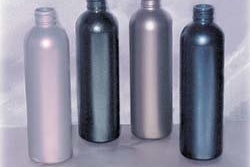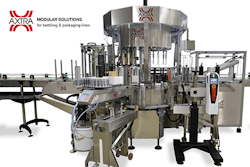Packaging of over-the-counter antihistamines is on a second front burner in Washington, too. After about 15 years of regulatory noodling, the FDA will decide whether label claims asserting “For relief of cold & allergy symptoms” can remain on antihistamine packages. The label copy enumerates the symptoms as “nasal congestion, sneezing, runny nose & itchy, watery eyes.” Aside from package copy, today’s product manufacturers display copy via print advertising, media, etc. Dimetapp® seems to be among the most aggressive, advertising its Cold & Cough Liqui-Gels® as giving “Fast” relief. No other product appears to make the “Fast” claim. Sudafed®, on the other hand, says nothing about offering relief, while it simply lists the symptoms the product helps. Benadryl Allergy® says “For allergy relief.” Products can make those label claims today for one of two reasons. Many products had their active ingredients listed in a “tentative” monograph published by the FDA in 1985. That monograph said that all active ingredients—and they were specifically named—contained in what are called Category 1 antihistamines have the same relief of cold symptoms as chlorpheniramine maleate, another Category 1 active, for which two manufacturers provided supporting clinical evidence. There was no supporting data for the other Category 1 actives. The FDA was essentially taking a scientific leap of faith. Products that came on the OTC market after 1985 may have had their active ingredients approved originally as prescription medications. The FDA may have approved the “For relief of cold...” claim based on data the manufacturer submitted as part of the new drug application (NDA). The knees of manufacturers of the pre-1985 OTC antihistamines are knocking the loudest. Here’s why. In 1995, FDA’s own New Drug Advisory Committee said that only two Category 1 actives—chlorpheniramine maleate and doxylamine succinate—have clear data that backs up their claim. The Advisory Committee argued that data could not be extrapolated to other Category 1 actives. Among major products, Contact® by SmithKline Beecham, Chlor-Trimeton® from Schering-Plough and Warner-Lambert’s Sudafed® contain chlorpheniramine malate. Chlor-Trimeton boasts on its outer carton that it contains chlorpheniramine malate. But these also contain other Category 1 actives besides the two approved by the Advisory Committee in 1995. Normally, the FDA accepts the advice of its advisory committees. This time it appears as if it will reject that advice. One FDA official, who is working on the issue, acknowledges that the antihistamine labeling issue “has two sides” and that it is “controversial.” That explains why the FDA has waited five years before it may countermand the recommendation of its own advisory committee. Kay Freeman, an FDA official, says that clinical evidence establishing the effectiveness of some active ingredients has become available since 1995. The FDA is making this data available for the first time. But Freeman says the FDA will only present the data to the NDAC. Patrice Wright, director of pharmacology and toxicology for the Consumer Healthcare Products Assn., says that OTC antihistamines can make the “For relief of colds...” claim if data exists to back up that contention. “But they understand that the claims have not yet been formally blessed by the FDA,” she adds.
Open up and say 'Ah' (sidebar)
FDA sticks its nose into antihistamines
Dec 31, 2000
Machinery Basics
Conveying Innovations Report
Editors report on distinguishing characteristics that define each new product and collected video demonstrating the equipment or materials as displayed at the show. This topical report, winnowed from nearly 300 PACK EXPO collective booth visits, represents a categorized, organized account of individual items that were selected based on whether they were deemed to be both new, and truly innovative, based on decades of combined editorial experience in experiencing and evaluating PACK EXPO products.
Take me there
2024 PACK EXPO Innovations Reports
Exclusive access: Packaging World editor-curated reports revealing PACK EXPO's most groundbreaking technologies across food, healthcare, and machinery sectors. Each report features truly innovative solutions selected from hundreds of exhibitors by our expert team. Transform your operations with just one click.
Access Now
Products
























